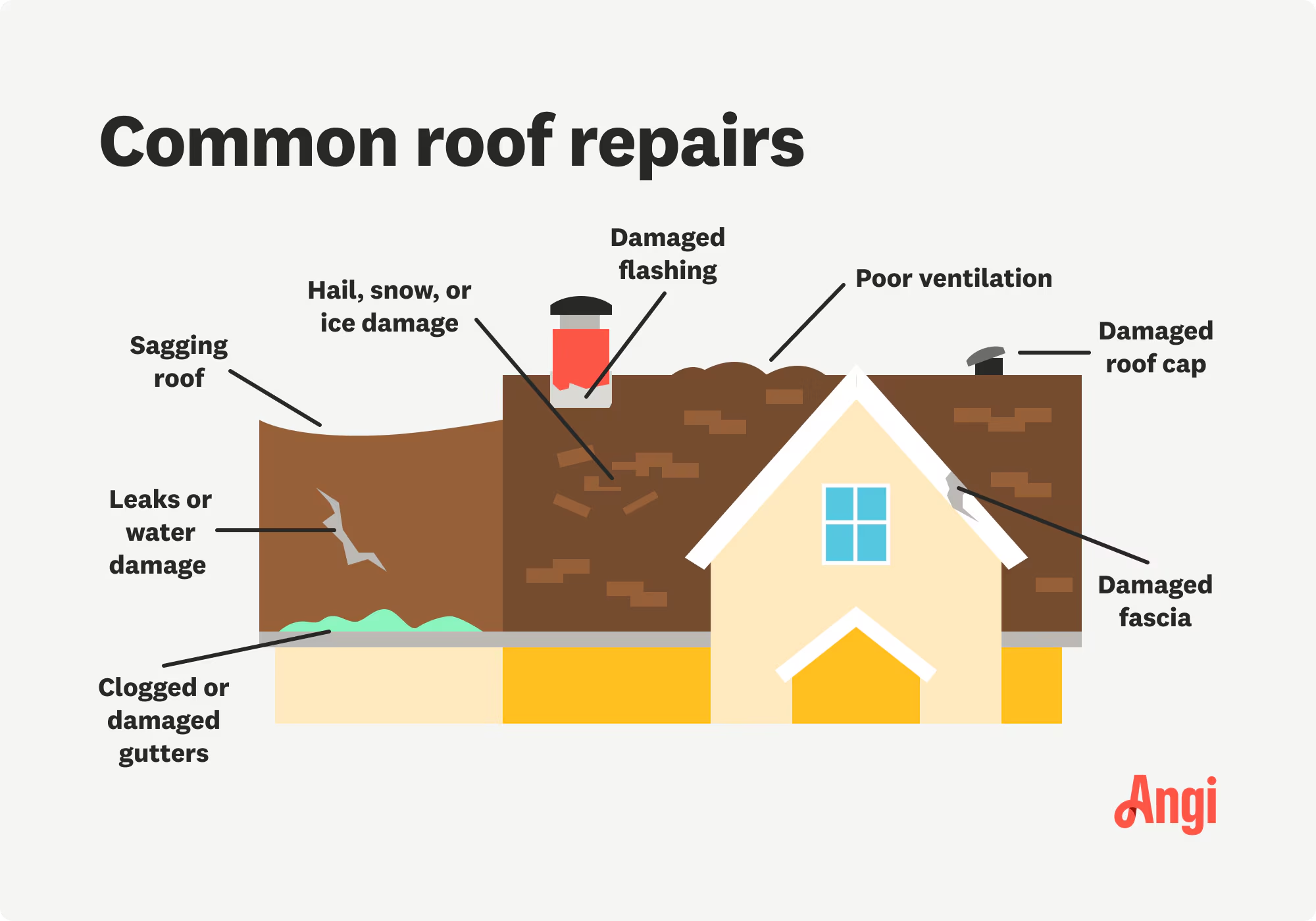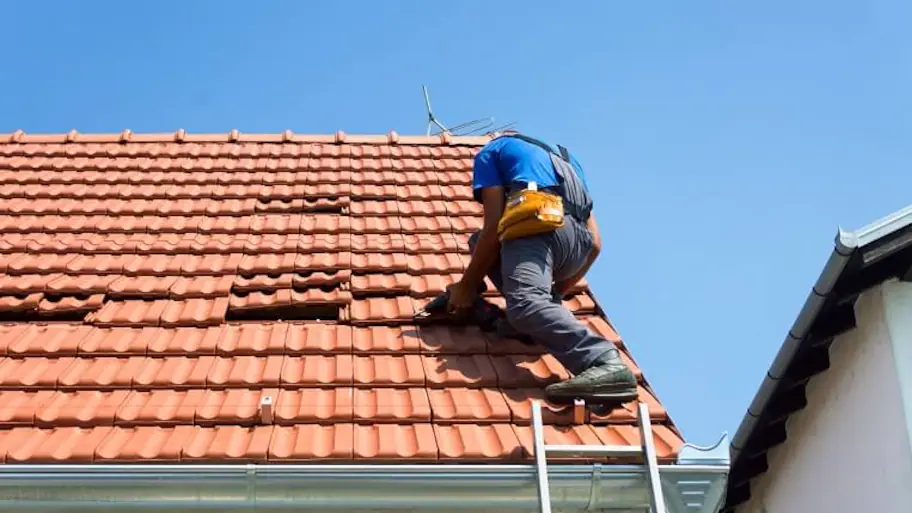Roofers Oahu: Expert Roof Installations and Repairs
Roofers Oahu: Expert Roof Installations and Repairs
Blog Article
Comprehending the Different Kinds of Roofings: A Comprehensive Guide for Homeowners
With a selection of alternatives-- varying from the conventional gable to the contemporary flat-- each kind presents unique benefits and obstacles that need to straighten with the homeowner's ecological considerations and specific requirements. As we check out the complexities of various roofing system kinds, it comes to be noticeable that one size does not fit all; the right selection might shock you.
Saddleback Roof
Gable roofing systems, defined by their triangular form, are among the most prominent roof styles due to their simpleness and performance in losing water and snow. This design includes two sloping sides that fulfill at a ridge, enabling efficient drain and decreasing the risk of water build-up. The high pitch frequently associated with saddleback roofs enhances their capacity to handle hefty precipitation, making them suitable for numerous climates.
Along with their sensible advantages, gable roofings supply aesthetic convenience. They can be adjusted to numerous architectural styles, from conventional to modern-day homes. The layout can likewise accommodate additional attributes such as dormer windows, which enhance all-natural light and air flow in the attic room space.
Additionally, saddleback roofs offer adequate room for insulation, adding to power efficiency. Homeowners can select from a range of roof materials, including asphalt roof shingles, metal, and floor tiles, even more boosting customization alternatives.
Despite their benefits, saddleback roofs might need additional support in locations prone to high winds or hefty snowfall. Overall, the saddleback roof continues to be a favored selection because of its blend of capability, longevity, and aesthetic appeal.
Apartment Roofs
Level roofs are commonly acknowledged for their minimal design and practical applications, especially in industrial and industrial settings (oahu roofing). These roofs feature a straight or virtually straight surface, which enables easy construction and versatile area use. While they may lack the aesthetic charm of pitched roof coverings, level roofings supply many benefits, particularly in city atmospheres where maximizing area is crucial
One of the primary benefits of level roofing systems is their access. Property owners can make use of the roof space for various purposes, such as roof yards, balconies, or solar panel installments. Additionally, flat roofings are typically much more economical to mount and maintain contrasted to their sloped equivalents, as they call for less materials and labor.
Usual materials used for level roof coverings include built-up roofing (BUR), modified bitumen, and single-ply membrane layers, each offering distinctive benefits. Generally, level roof coverings serve as a useful and adaptable selection for lots of house owners and services alike.
Hip Roofings
Hip roofing systems are identified by their sloped sides that assemble on top, forming a ridge. This layout is distinctive from gable roofing systems, as all 4 sides of a hip roof incline downwards toward the wall surfaces, providing an extra secure structure. The angle of the inclines can vary, enabling for versatility in architectural appearances and capability.
One of the key benefits of hip roofings is their capacity to stand up to heavy winds and negative climate condition. The sloped surface areas allow far better water drainage, lowering the risk of leakages and water damage. In addition, hip roofings supply enhanced attic room area, which can be used check that for storage or even converted into habitable locations.
However, constructing a hip roofing can be more intricate and pricey than easier roof types, such as gable roofing systems. The extra material and labor entailed in developing the slopes and making certain correct architectural stability can cause greater costs. Regardless of these disadvantages, numerous property owners prefer hip roof coverings for their resilience, aesthetic allure, and possibility for energy effectiveness.
Mansard Roofings
Mansard roofing systems, often recognized by their special four-sided design, attribute 2 slopes on each side, with the lower slope being steeper than the top. This building style, originating from France in the 17th century, is not only visually enticing yet practical, as it makes the most of the useful room in the top floorings of a building. The high lower slope permits more clearance, making it an ideal choice for attic rooms or loft spaces, which can be exchanged living spaces.
Mansard roofs are characterized by their convenience, suiting numerous building styles, from standard to modern. They can be created with various materials, consisting of asphalt tiles, slate, or metal, providing property owners with a range of alternatives to match their budgets and choices. Additionally, the design enables the integration of dormer windows, enhancing all-natural look at this website light and air flow in the top degrees.
However, it is necessary to take into consideration the prospective drawbacks. Mansard roofs might need even more upkeep because of the complexity of their layout, and their high slopes can be testing for snow and rain drainage. Generally, mansard roofing systems combine beauty with usefulness, making them a prominent choice amongst property owners seeking distinct architectural functions.
Lost Roofing Systems
As homeowners increasingly look for simplicity and performance in their architectural styles, lost roofing systems have emerged as a popular selection. Identified by a solitary sloping airplane, a shed roof presents a minimal visual that matches numerous home styles, from contemporary to rustic.
Among the primary benefits of a shed roofing is its straightforward construction, which frequently equates to lower labor and material expenses. This layout permits for effective water drainage, minimizing the danger of leakages and water damage. Additionally, the vertical incline supplies enough space for skylights, enhancing all-natural light within the interior.
Dropped roofing systems likewise supply adaptability in terms of use. They can be properly integrated into additions, garages, or outside structures like pavilions and sheds. Additionally, this roofing system style can suit different roof products, consisting of metal, asphalt shingles, or perhaps eco-friendly roof coverings, lining up with environment-friendly campaigns.
Nonetheless, it is vital to take into consideration regional climate problems, as heavy snow tons may require modifications to the roof covering's angle or framework. In general, dropped roofs provide a sensible and cosmetically pleasing option for homeowners aiming to make best use of capability without endangering design.
Verdict


Gable roof coverings, characterized look at more info by their triangular form, are among the most prominent roof covering designs due to their simpleness and efficiency in dropping water and snow. oahu roofing. The high pitch typically associated with gable roofings boosts their ability to handle hefty precipitation, making them ideal for numerous environments
While they may do not have the visual appeal of pitched roofing systems, flat roofings provide numerous advantages, especially in city settings where taking full advantage of space is critical.

Report this page